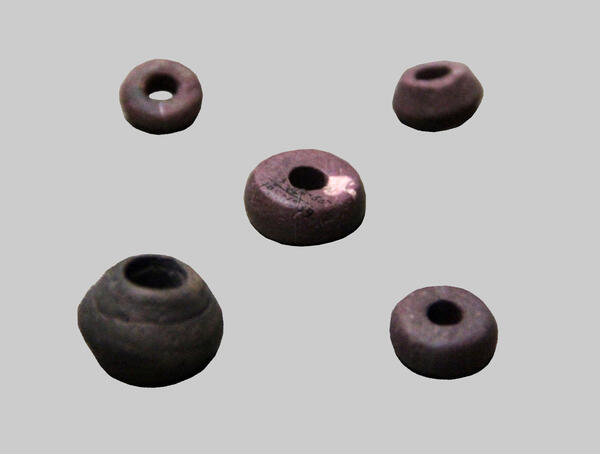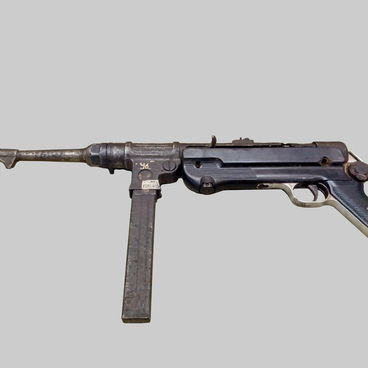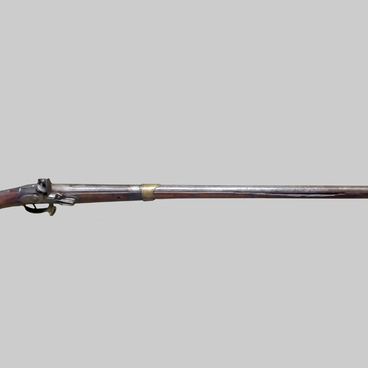Shale spindle whorl. From the collection of individual finds in the territory of the ancient settlement near the village of Gorodishche, Velikoluksky district (Town on the Lovat River).
The 1950s were a time of active study of the archaeological sites in the south of the Pskov Region. The staff of the Velikiye Luki Regional Museum of History and Local Lore actively participated in the main research, which was carried out by the West Dvina detachment of the Slavic expedition of the Leningrad branch of the Institute for the History of Material Culture of the USSR Academy of Sciences led by Yadviga Stankevich.
One of the monuments of the greatest research interest is the settlement which was later called Town on the LOvat River. The cultural layer of the ancient settlement did not undergo any significant late destruction.
The 1950s were a time of active study of the archaeological sites in the south of the Pskov Region. The staff of the Velikiye Luki Regional Museum of History and Local Lore actively participated in the main research, which was carried out by the West Dvina detachment of the Slavic expedition of the Leningrad branch of the Institute for the History of Material Culture of the USSR Academy of Sciences led by Yadviga Stankevich.
One of the monuments of the greatest research interest is the settlement which was later called Town on the LOvat River. The cultural layer of the ancient settlement did not undergo any significant late destruction.
This made it possible to carry out archaeological excavations over a large area.
Some researchers consider this ancient settlement to be the predecessor of VelIkiye LUki. Saint Petersburg archaeologist Valentina Goryunova, who headed the Velikiye Luki archaeological expedition in the 1970s, emphasized that the settlement arose ‘on the border of two vast cultural and tribal zones: an array of cultural monuments of long burial mounds approaches [it] from the south, and the uninhabited swampy Lovat valley extends in the north’.
The items discovered during excavations in the territory of this settlement suggest that the main occupation of the local residents was craft. The residents of the Town on the Lovat River were engaged in blacksmithing and jewelry, and merchants delivered goods along the Lovat, which, according to the Tale of Bygone Years, was part of the trade route ‘from the VarAngians to the Greeks’.
It was probably along this route that the pink shale spindle whorls - rounded weights that were put on a spindle to provide stability and uniform rotation - arrived to the Town on the Lovat River. The spindle whorls on display were found by an expedition in 1954-1955.
Spindle whorls were usually made of clay and stone. In the 11th-13th centuries, pyrophyllite (pink shale) spindle whorls were widespread in various regions of Ancient Rus'. Pyrophyllite is a beautiful stone, and is easy to process. In Kievan Rus' this mineral was used not only to make spindle whorls and jewelry, but also to decorate temples.
Pink shale spindle whorls were made in the area of the town of Ovruch, as the only known pyrophyllite shale deposits in Eastern Europe were discovered there. Ovruch was located in the territory of the modern Zhytomyr Region, in Ukraine.
In the 13th century century, Ovruch was sacked during the Tatar-Mongol invasion, and the production of shale spindle whorls ceased. It is believed that in the 12th-14th centuries, when there were no coins, shale spindle whorls may have been used as coins for small payments.
Some researchers consider this ancient settlement to be the predecessor of VelIkiye LUki. Saint Petersburg archaeologist Valentina Goryunova, who headed the Velikiye Luki archaeological expedition in the 1970s, emphasized that the settlement arose ‘on the border of two vast cultural and tribal zones: an array of cultural monuments of long burial mounds approaches [it] from the south, and the uninhabited swampy Lovat valley extends in the north’.
The items discovered during excavations in the territory of this settlement suggest that the main occupation of the local residents was craft. The residents of the Town on the Lovat River were engaged in blacksmithing and jewelry, and merchants delivered goods along the Lovat, which, according to the Tale of Bygone Years, was part of the trade route ‘from the VarAngians to the Greeks’.
It was probably along this route that the pink shale spindle whorls - rounded weights that were put on a spindle to provide stability and uniform rotation - arrived to the Town on the Lovat River. The spindle whorls on display were found by an expedition in 1954-1955.
Spindle whorls were usually made of clay and stone. In the 11th-13th centuries, pyrophyllite (pink shale) spindle whorls were widespread in various regions of Ancient Rus'. Pyrophyllite is a beautiful stone, and is easy to process. In Kievan Rus' this mineral was used not only to make spindle whorls and jewelry, but also to decorate temples.
Pink shale spindle whorls were made in the area of the town of Ovruch, as the only known pyrophyllite shale deposits in Eastern Europe were discovered there. Ovruch was located in the territory of the modern Zhytomyr Region, in Ukraine.
In the 13th century century, Ovruch was sacked during the Tatar-Mongol invasion, and the production of shale spindle whorls ceased. It is believed that in the 12th-14th centuries, when there were no coins, shale spindle whorls may have been used as coins for small payments.



